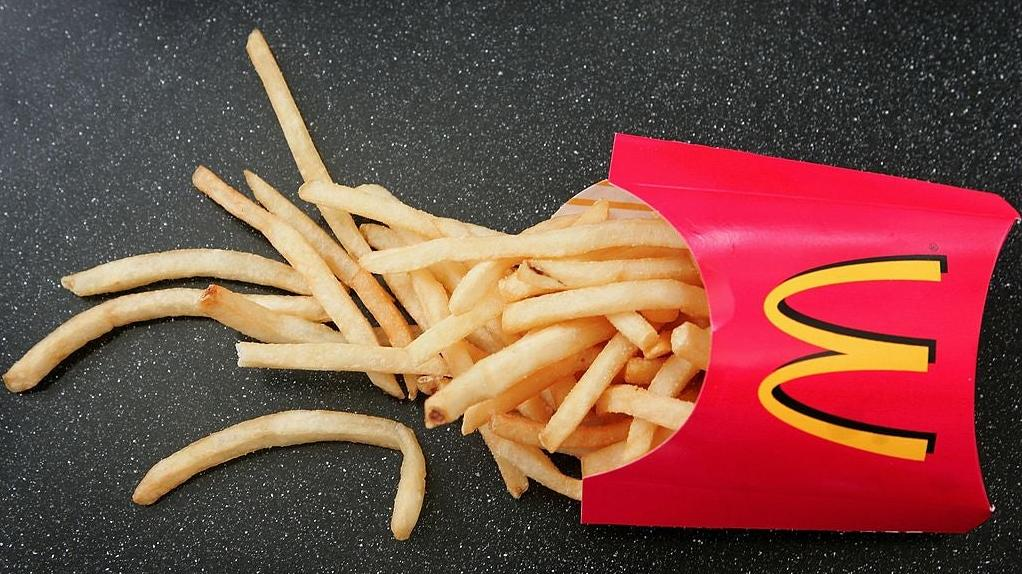How Layoffs Fit Into McDonald's 2023 Strategy
Corporate and culinary restructuring are bad for some employees, and maybe good for others.
Lost in the recent excitement over McDonald's new and improved burgers and the triumphant return of the Hamburglar is a more somber piece of news: Earlier this month, the beloved fast food chain temporarily closed all of its U.S. offices amidst a significant wave of layoffs.
For the most part, it's bad form to cheer when people lose their jobs. Yet this bit of news was music to the ears of McDonald's shareholders, boosting the company's stock price by a whopping 7% since April 1.
To be fair, it's not just the layoffs that set the stock ticker a'ticking. Per NPR, the McDonald's global sales "rose by almost 11% in 2022, with nearly 6% of that in the United States." Add in the buzz around its new menu offerings and a potential shift toward more economical footprints for its restaurants, and there's a lot for both consumers and portfolio managers to get excited about.
But how do these developments affect the day-to-day experience of actually walking into a McDonald's, whether you're picking up lunch or a work shift? We'll get to that in a moment, but first, let's get up to speed.
The continuing fallout from McDonald’s corporate culling
The friendly word for "firing a large chunk of one's labor force" is the more constructive, innocuous "restructuring." And frankly, it's something that most corporations go through on a semi-regular basis. If you work for a large company, chances are you've endured at least one of these cold-sweat situations, and no amount of HR wordplay will help when you're standing next to Grimace in the unemployment line. But for those lucky enough to hang on, a carefully planned "restructuring" can provide a much-needed change in the workplace, with a renewed set of goals and momentum.
In the case of McDonald's, it's not all McFlurries and Apple Pies for the folks left behind. The Wall Street Journal reports that benefits and pay packages have been cut for many. That's a hell of a combo, and if I had to assign them a position on the menu board, I'd lay down a Number One, followed by a big Number Two.
At least there was some sensitivity at play. According to an anonymous source at McDonald's (as seen in the New York Post via Reuters), the decision to close the corporate offices was designed to allow terminated employees to depart with a measure of dignity.
"It used to be that folks would be called into a conference room with the windows papered over and then have to walk back to their desk to collect their personal belongings and leave with their head down," the source said.
And once the corporate folks get back to the office, there will be two new managers waiting for them. The company has announced a pair of internal promotions: Michael Gonda, who had previously served as McDonald's global chief communications officer, has been elevated to "Senior Vice President and Chief Impact Officer [of] North America." Gonda will be "responsible for driving the holistic impact strategy across Communications, State and Local Government Relations, Sustainability & ESG, and Philanthropy in the U.S. and Canada [and] his cross-functional team will proactively engage stakeholders and communities to protect and enhance the..."
Oh, God, make it stop. I'm choking on this buzzword sandwich. Where were we?
Oh, yes, the second promotion. That honor goes to Jami Guthrie, newly minted as "Vice President, Strategic Insights and Prioritization." His job description is a bit more manageable, with a goal of "creating an integrated view for the entire U.S. business."
This last mission sounds as though it'll have a more significant impact on the day-to-day life of an actual restaurant employee. So let's get into that.
Where does this leave McDonald’s frontline workers and customers?
First, some good news: Though benefits and pay have been slashed, the cuts appear to be limited to corporate employees. As NPR states, "There is a significant shortage of workers in the fast food industry. McDonald's can't afford to reduce its workforce."
Less clear will be the effect on franchisees. Most of the drive-thru lanes we use as customers aren't actually owned by McDonald's corporate, but by private individuals or franchise groups. And this relationship is often contentious. Shifting directives and points of contact will, at least initially, ensure that the Franchise Wars will continue (though we all know who will eventually win out). If Guthrie's goal is to "create an integrated view" for all U.S. restaurants, he's going to have to get franchises to buy into his vision, not just the corporate-owned locations.
As for the customers waiting in line for the new(ish) Big Mac and McDouble, well, those meals probably won't be getting any cheaper. Even with menu prices on the rise, ol' Ronald knows you're hooked—McDonald's foot traffic increased by 5% last year. Do you really think a company, even a freshly "restructured" one, would drop its costs once you're used to paying more for a burger? I'm telling you, the Hamburglar has it all figured out.
With the company set to release its Q1 earnings on April 25, expectations are high. And however things shake out, here's an interesting tidbit to consider: For perhaps the first time, the folks flipping those freshly updated burgers have, if not the wages they deserve, then slightly more job security than their white-collar corporate overlords.
